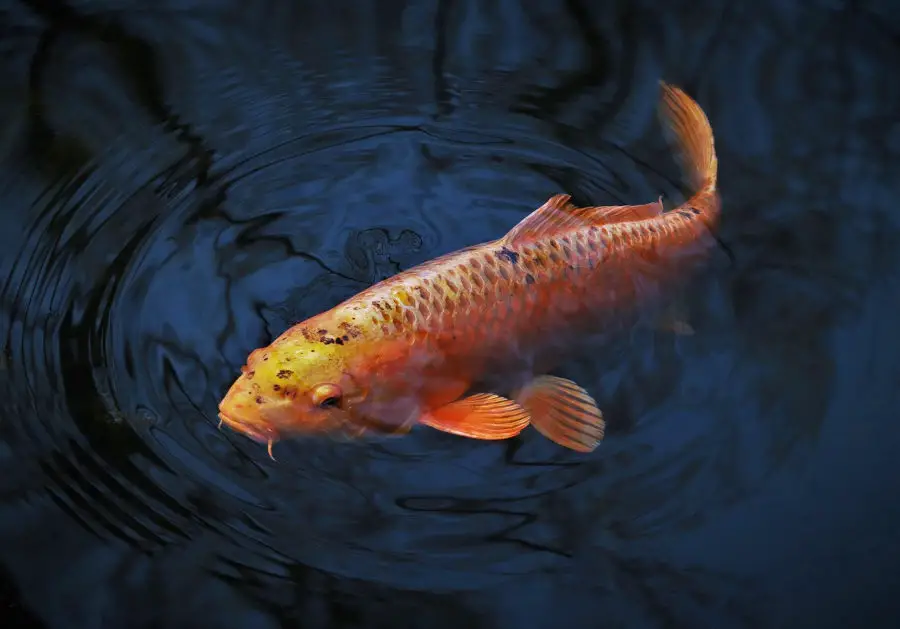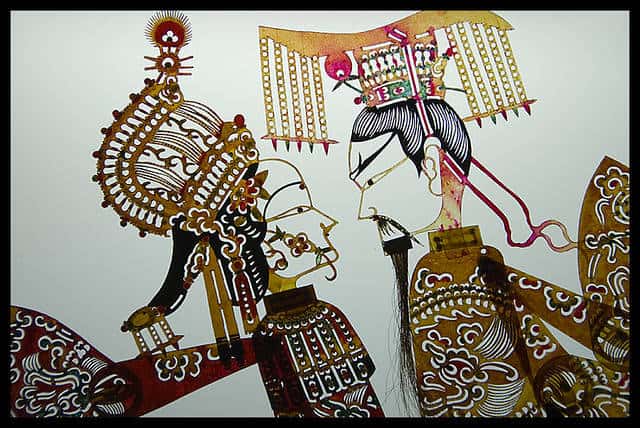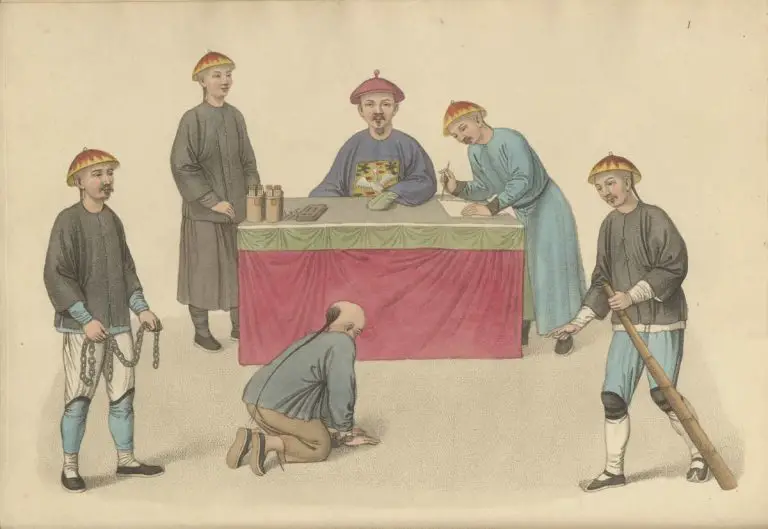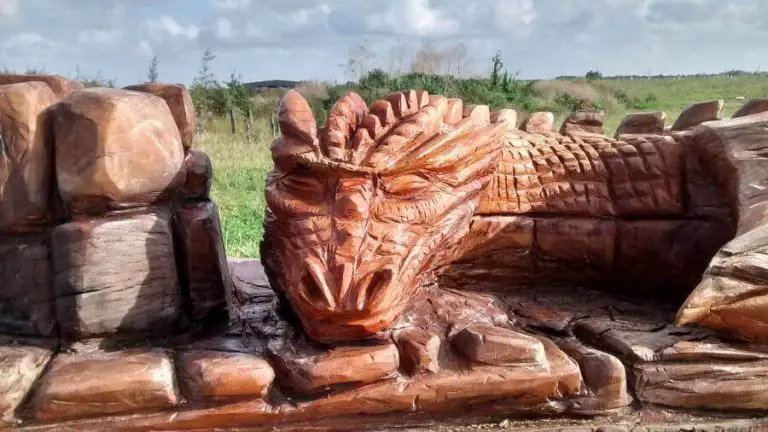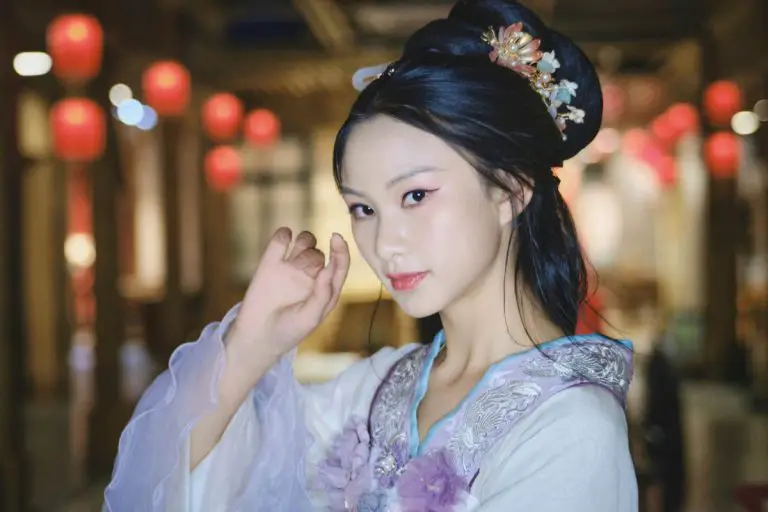Graceful, vibrant, and quietly powerful, koi fish are more than just ornamental beauties. In Chinese culture, they swim through centuries of meaning—woven into folklore, poetry, art, and the very layout of harmonious homes. Their elegant movements evoke calm, yet the koi’s deeper symbolism stirs something stronger: resilience, success, and spiritual elevation.
Part of what makes koi so beloved in China is their duality. They are soft in form but strong in spirit. Their upstream journey reflects the core Confucian ideal of self-improvement and perseverance. Unlike many symbols that are passive or decorative, the koi is active. It moves. It climbs. It transforms.
Children grow up hearing stories of koi leaping up the waterfall at the Dragon Gate and becoming powerful dragons. This tale is not just folklore—it’s an inspiring metaphor. It speaks to scholars preparing for imperial exams, entrepreneurs building new ventures, or anyone striving to overcome life’s challenges. The koi reminds them that transformation is possible with courage and tenacity.
In feng shui and Chinese metaphysics, koi are a living magnet for abundance. Their presence, especially in flowing water, is thought to energize the surrounding space with chi, the life force that fuels health, luck, and financial success.
Golden koi, in particular, are closely associated with wealth. Their shimmering scales echo the color of ancient coins and imperial robes, making them auspicious in both visual and energetic terms. Even the Chinese word for fish, “鱼” (yú), sounds like “余,” which means “surplus” or “abundance.” This phonetic harmony strengthens their symbolic power.
When koi swim in pairs, they also bring harmony in relationships and family life. When they swim in groups, they signal growing fortune. A koi pond, carefully placed, is not just decorative—it’s a reservoir of opportunity.
To the Chinese, koi are not just fish. They are living blessings.
Historical Roots of Chinese Koi
The story of koi begins with the common carp (Cyprinus carpio), a humble fish native to Asia. In early Chinese history, wild carp swam freely in the Yellow River basin. These hardy fish were admired for their strength and ability to swim upstream, even against powerful currents. Farmers respected them. Fishermen relied on them.
But it was their character—not just their flesh—that caught the attention of ancient scholars and mystics. Over time, the carp was elevated from a practical food source to a meaningful symbol of persistence and growth. Through centuries of selective breeding, particularly during the Tang and Song dynasties, these once-plain fish evolved into brilliant koi. Their vivid colors and graceful shapes made them highly prized in imperial gardens and elite homes.
Carp became koi not just through biology, but through culture.
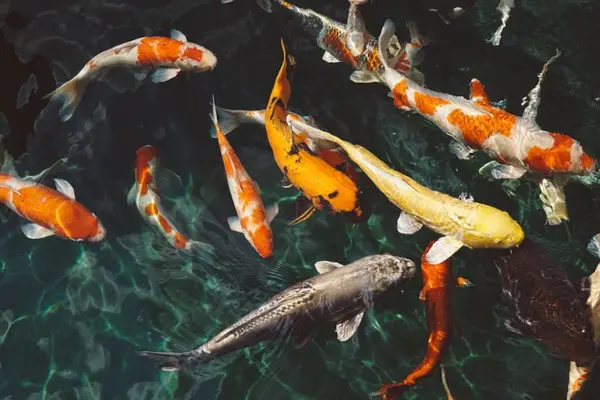
Legend of the Dragon Gate and Imperial Exams
One of the most powerful stories in Chinese mythology is the legend of the Dragon Gate (Longmen). According to this tale, a great number of carp swim upstream in the Yellow River, striving to leap over the high waterfall at the Dragon Gate. Most fail. But the one carp that succeeds in the leap transforms into a celestial dragon, ascending to the heavens.
This story has been deeply embedded into Chinese values of perseverance and achievement. During the imperial era, it became a metaphor for scholars preparing for the grueling civil service exams. Just like the carp, students faced immense difficulty, and only a few succeeded in passing through the “gate” to become government officials.
Parents would often encourage their children with this tale, turning the koi into a powerful symbol of ambition and social mobility. In Chinese art, depictions of koi leaping toward the Dragon Gate are still popular motifs of aspiration and hope.
Koi in Ancient Poetry and Painting
Long before koi appeared in backyard ponds, they lived in the imagination of China’s greatest poets and painters. The Tang dynasty poet Du Fu wrote of “carp leaping in clear waters,” tying their movement to vitality and elegance.
During the Song dynasty, literati painters captured koi swimming under lotus leaves, symbolizing peace, purity, and quiet strength. In scrolls, they appear among bamboo and rocks—complementing other natural elements that reflect harmony and balance. These paintings were not just decorative. They were meant to uplift the viewer’s spirit and align the soul with nature’s rhythm.
As dynasties rose and fell, koi remained a cultural constant—beloved across generations and social classes. Whether found in palace murals or village scrolls, they spoke a common language of hope, determination, and prosperity.
Symbolic Meanings in Chinese Culture
In Chinese culture, koi fish are celebrated as powerful symbols of perseverance and ambition. Their natural behavior of swimming upstream against strong currents embodies the human spirit’s determination to overcome obstacles.
This relentless drive is admired and often linked to personal growth, success, and the pursuit of one’s goals. The koi’s journey upstream is a metaphor for facing life’s challenges head-on, encouraging people to remain steadfast and resilient. This symbolism resonates deeply, inspiring individuals to push beyond limitations and strive for excellence.
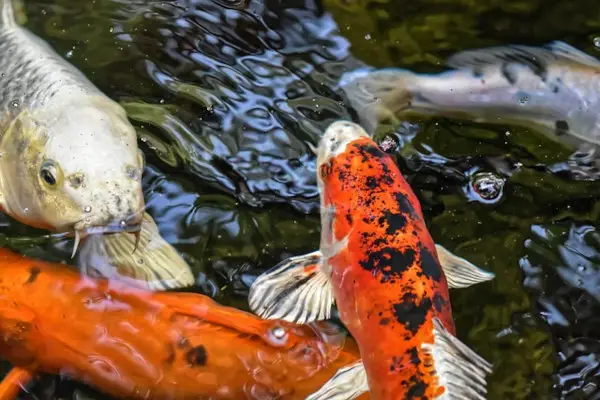
Koi as a Sign of Social Status
Beyond their symbolic strength, koi also became emblems of wealth and prestige. During the Ming and Qing dynasties, koi ponds were a luxury feature in the homes of scholars, aristocrats, and the imperial family. The more vivid and rare the coloration, the more valuable the fish—and the more refined the household.
Owning koi was not just about aesthetics. It was a statement of cultivation and success. Hosting guests beside a beautifully maintained koi pond, with the fish gliding silently beneath lotus blossoms, reflected a life in harmony with nature—and one of elevated social standing.
Even today, large, healthy koi in pristine ponds suggest not just financial stability, but thoughtful living and cultural appreciation.
Dual Fish Motif in Marriage and Harmony
The image of two koi swimming together is a common and cherished motif in Chinese art and marriage symbolism. In Mandarin, the word for fish (yú) shares a pronunciation with the word for abundance (余), making two fish symbolic of a bountiful and balanced union.
In traditional weddings, the motif of “双鱼” (shuāng yú, or double fish) often appears on fabrics, ceramics, and decorations. It conveys not just fertility and wealth, but mutual support and lasting love.
The dual koi also appear in Taoist and Buddhist imagery, representing harmony between opposites—yin and yang, masculine and feminine, action and stillness. Their synchronized movements in water suggest emotional flow and unity in relationships.
In feng shui, placing images or sculptures of paired koi in the bedroom or relationship corner of a home enhances marital harmony and partnership energy.
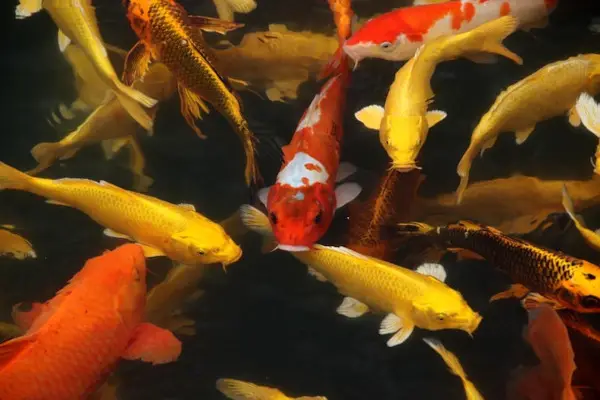
The Meaning of Koi Colors
Color plays a vital role in Chinese symbolism, and koi are no exception. Each hue carries a unique message, shaping the energy they bring into a space. When selecting koi for a pond, artwork, or feng shui placement, understanding their color meanings can help align your intentions with powerful cultural symbolism.
Red Koi: Love and Passionate Relationships
Red koi are vibrant and full of fire. In Chinese culture, red represents joy, celebration, and strong emotional bonds. A red koi is especially associated with deep love, family unity, and lasting marriage.
Often linked to the female energy in a relationship, red koi bring warmth and connection to romantic partnerships. In feng shui, placing an image of a red koi—or a pair of red and white koi—in the bedroom can enhance intimacy and devotion.
For newlyweds or couples looking to rekindle affection, red koi are considered strong love magnets.
Yellow and Gold Koi: Wealth, Prosperity, and Financial Success
Shimmering gold or bright yellow koi are perhaps the most auspicious of all. These colors mirror the hue of ancient Chinese gold coins and imperial treasures, making them direct symbols of wealth and success.
In feng shui, yellow and gold koi are used to activate the wealth corner of a home or office. A koi pond with golden fish in the southeast sector is believed to attract business luck and financial abundance.
These koi are often paired with images of money trees, golden ingots, or lotus flowers to amplify their effect.
Black Koi: Perseverance Through Hardship
While black may seem solemn, it carries a powerful and positive meaning in the context of koi symbolism. Black koi represent resilience, protection, and the strength to overcome life’s obstacles.
They are often associated with masculine energy and the father figure in a family. A black koi is said to absorb negative energy and guard against misfortune, making it a strong presence in any pond or feng shui layout.
For individuals recovering from setbacks or seeking emotional strength, the black koi stands as a guardian and a guide.
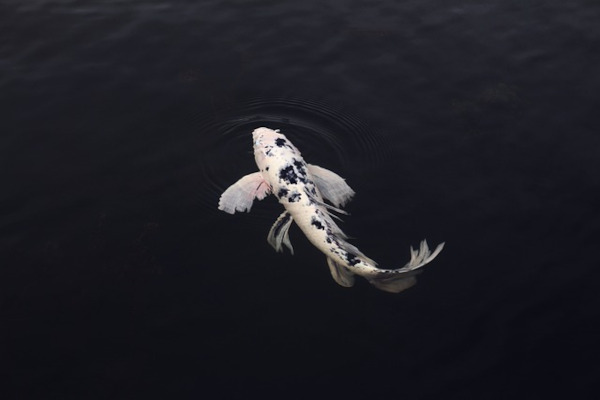
White Koi: Purity and New Beginnings
Elegant and calm, white koi symbolize purity, spiritual growth, and fresh starts. They are especially powerful when accented with red markings, which combine peaceful energy with action and success.
White koi are ideal for people embarking on a new chapter—whether it’s a new job, new relationship, or personal transformation. In feng shui, placing a white koi figurine in the center of the home can help clear stagnant energy and invite clarity.
They are also popular in meditation spaces for their serene and grounding presence.
Blue Koi: Peace and Tranquility
Blue koi are the gentle water element personified. They symbolize calm, emotional healing, and deep inner peace. Blue also represents trust, loyalty, and open communication—making blue koi perfect for enhancing family harmony or smoothing tensions at work.
They’re especially suited for people recovering from emotional stress or seeking mental clarity. In feng shui, a blue koi image placed in the east can support well-being and family health.
Blue koi move gracefully, often creating a meditative effect as they glide. Their energy reminds us that strength can be soft—and that calm is a kind of power.
| Color | Element Association | Symbolic Meaning | Ideal Feng Shui Placement |
| Red | Fire | Love, passion, strong relationships | South (Fame & Recognition); Bedroom |
| Yellow / Gold | Earth / Metal | Wealth, prosperity, financial success | Southeast (Wealth); Office or Entryway |
| Black | Water | Resilience, strength through adversity | North (Career); Near entrance or hallway |
| White | Metal | Purity, fresh beginnings, clarity | West (Creativity); Study or nursery |
| Blue | Wood / Water | Calm, peace, emotional healing | East (Health); Meditation or bathroom area |
Koi in Feng Shui Principles
In feng shui, the presence of koi fish connects directly to two vital forces: the Water element and the flow of qi (life energy). Water symbolizes wealth, wisdom, and emotional balance. Koi add movement and vitality to this element, enhancing its effect by keeping the energy fresh and dynamic rather than stagnant.
The Five Elements—Water, Wood, Fire, Earth, and Metal—must be balanced for a space to thrive. Koi ponds or aquariums naturally engage this system: water is the base; plants represent wood; stone decorations contribute earth; bright lighting brings fire; and metal elements, like coins or structures, provide the final piece.
A well-designed koi environment becomes a microcosm of harmony, nourishing not only the fish but also the prosperity and balance of the people around it.
Ideal Water Placement for Wealth Activation
Location matters. According to classical feng shui, placing a koi pond or aquarium in the southeast sector of your home or property activates the Wealth Corner. This area governs abundance, financial growth, and opportunity.
Another powerful placement is near the front entrance, but only outside. A pond or fountain with koi to the left of the main door (when facing out from inside) invites prosperous qi into the household. However, water should never be placed directly behind a home—it symbolizes support washing away.
Indoors, water features must be used with care. They should be in active areas like the living room or office, never the bedroom, where too much yang energy can disturb rest.
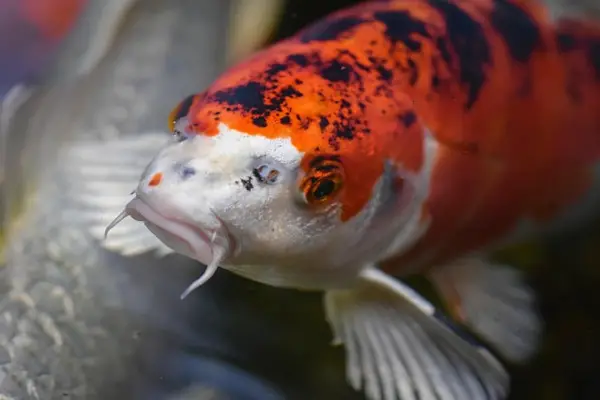
Number of Fish and Auspicious Combinations
The number of koi in a pond or aquarium carries specific meaning in feng shui. Odd numbers are generally more favorable than even ones, with the most popular being nine—a number of completion, luck, and long-lasting success.
A classic combination is eight brightly colored koi (typically red or gold) with one black koi. This formation symbolizes wealth protected from misfortune. The black koi absorbs negative energy, while the others represent abundance and joy.
Other auspicious groupings include:
- 1 koi: New beginnings
- 3 koi: Growth and progress
- 6 koi: Smooth business and career paths
- 9 koi: Ultimate prosperity
Avoid unlucky numbers like four, which sounds like the word for death in Chinese.
Pairing Koi with Waterfalls, Plants, and Stones
Koi ponds reach their full energetic potential when paired thoughtfully with nature. Flowing waterfalls introduce constant motion, symbolizing continuous wealth and opportunity. The sound of moving water also activates qi and creates a soothing atmosphere.
Lotus flowers and aquatic plants not only beautify the pond but also symbolize purity, growth, and spiritual awakening. Just be sure not to overplant—water should remain visible and open for qi to circulate.
Stones add stability and grounding. Round, smooth river rocks encourage gentle energy flow, while jagged stones may create sha qi (negative energy) if poorly placed. Position them carefully to avoid sharp corners pointing at the home or pond.
Together, koi, water, plants, and stone create a balanced ecosystem that doesn’t just please the eye—it energizes your space with lasting harmony and wealth potential.
Designing a Koi Pond for Fortune
In feng shui, the orientation and shape of a koi pond play a critical role in attracting positive energy and prosperity. Ideally, the pond should face south or southeast, directions associated with fame, recognition, and wealth. These orientations allow the pond to receive gentle morning sunlight, which energizes the water and enhances the flow of auspicious chi.
The shape of the pond should be natural and flowing, avoiding sharp angles or overly geometric forms. Rounded or kidney-shaped ponds are preferred because they encourage smooth energy circulation, while angular or irregular shapes can create disruptive “sha qi” or negative energy.
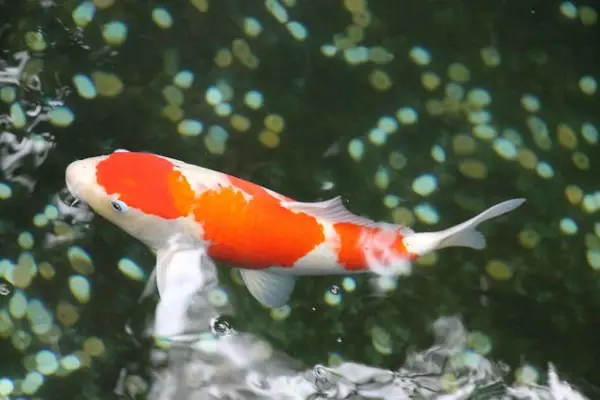
Water Quality as Energy Quality
Water quality is directly linked to the quality of energy in feng shui. Clean, clear, and gently flowing water symbolizes vibrant, healthy chi that attracts wealth and good fortune. Conversely, stagnant or dirty water blocks energy flow and can bring misfortune or financial loss.
Regular maintenance is essential to keep the water fresh and lively, including filtration systems and aeration to simulate natural movement. The sound and motion of flowing water invigorate the space, preventing energy stagnation and promoting continuous abundance.
Safe Havens: Avoiding Sha Qi and Poison Arrows
A well-designed koi pond must avoid “sha qi” (negative energy) and “poison arrows” (sharp, aggressive energy from pointed objects or structures). Positioning the pond away from sharp corners of buildings, fences, or roads is crucial to prevent harmful energy from piercing the tranquil space.
Additionally, the pond should not be placed directly in front of the main entrance, as this can cause chi to rush out rather than circulate within the home. Creating a “safe haven” involves thoughtful landscaping with curved edges, natural stones, and lush plants that soften harsh lines and protect the pond’s peaceful energy.
Combining Lighting and Movement for Dynamic Chi
Lighting and water movement work together to create dynamic chi, the vibrant life force energy that fuels prosperity and peace. Natural sunlight energizes the pond during the day, while subtle underwater or surrounding lighting can extend this effect into the evening, creating a warm, inviting atmosphere.
Water features such as small waterfalls, fountains, or bubbling streams add sound and motion, which stimulate chi flow and prevent stagnation. This combination of light and movement ensures the pond remains a lively, auspicious focal point that continuously attracts positive energy.
Related reading: Arowana: The Dragon Fish That Brings Wealth and Prosperity – Opens in new tab
Indoor Feng Shui with Koi
Indoor koi aquariums are powerful feng shui tools to multiply prosperity and attract positive energy into your home or office. Water, as a key feng shui element, symbolizes wealth and abundance, and koi fish swimming in clean, well-maintained aquariums enhance the flow of vibrant “chi.” The movement of the fish animates the water, generating yang energy that stimulates growth and financial success.
For optimal results, place the aquarium in the southeast sector of your space, the traditional wealth corner, or the north area, which governs career opportunities. Maintaining water clarity and fish health is essential; stagnant or dirty water can block energy and diminish the aquarium’s auspicious effects.
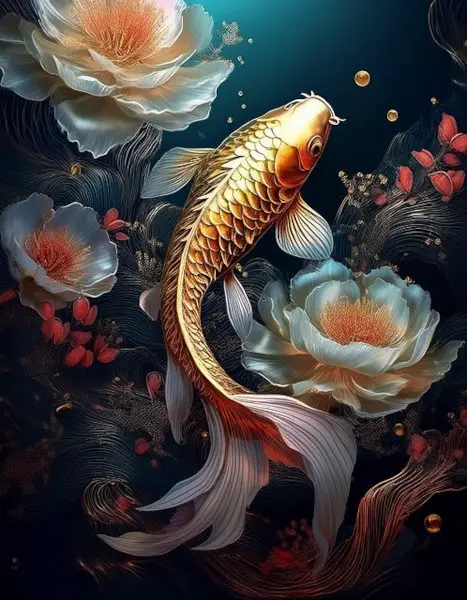
Koi Paintings and Scrolls as Wealth Vectors
Koi paintings and scrolls serve as elegant, symbolic decor that channels prosperity and ambition indoors without the need for live fish. These artworks often depict koi swimming upstream, a metaphor for perseverance and triumph over obstacles, reinforcing positive energy in the environment.
Displaying vibrant koi art in offices or wealth corners can activate abundance and inspire motivation. Materials like silk scrolls or framed paintings also add cultural depth and aesthetic appeal, making them popular choices for those who want to invite good fortune while honoring Chinese artistic traditions.
Take a look at these awesome Koi Fish decorations.– Aff.link
Digital Koi Screensavers: Modern Luck Boosters
In today’s digital age, koi symbolism extends beyond physical objects into virtual spaces. Digital koi screensavers and animated wallpapers bring the calming, prosperous energy of koi fish to your computer or smartphone.
These modern luck boosters serve as constant reminders of perseverance and abundance, subtly influencing mindset and energy flow throughout your day. While they cannot replace the tangible feng shui benefits of live fish or water features, digital koi are a convenient and accessible way to incorporate traditional symbolism into contemporary lifestyles.
Koi in Festivals and Everyday Rituals
During the Chinese Spring Festival (Lunar New Year), koi imagery becomes especially prominent. These graceful fish appear in red-and-gold posters, lanterns, and traditional nianhua (New Year paintings) that decorate homes and businesses.
The reason? Koi symbolize surplus and success. The Chinese word for fish (鱼, yú) is a homophone for abundance (余), making koi a natural emblem for the popular New Year blessing: “年年有余” (nián nián yǒu yú) — “May you have abundance year after year.”
It’s common to see pictures of koi leaping from water or swimming with lotus flowers and gold coins—each element reinforcing wishes for wealth, harmony, and renewal. Families place these images near entryways or wealth corners to invite good fortune in the year ahead.
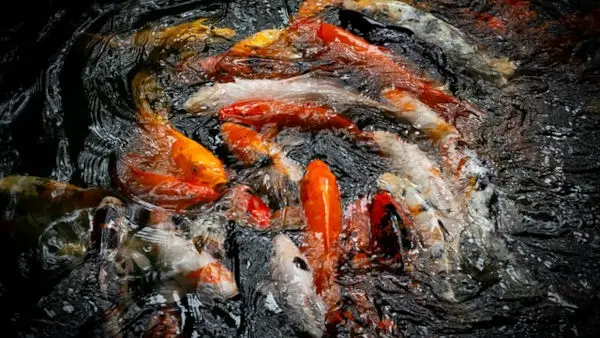
Children’s Day Kite Flying with Carp Banners
While this tradition is more famously observed in Japan, the use of carp-shaped kites and streamers—known as koi nobori—also resonates with Chinese cultural themes. In China, similar customs appear during Children’s Day and local springtime celebrations, especially in regions with strong ties to river life.
These colorful banners, fluttering in the wind, represent children’s growth, health, and determination. The carp’s legendary swim against the current makes it the perfect symbol for aspiring youth.
Flying a koi banner or displaying carp motifs during this season is seen as a blessing for a child’s success—whether in academics, moral character, or life’s greater challenges.
Gifting Koi Art for Milestones and New Homes
In Chinese custom, giving koi-themed gifts is a meaningful way to celebrate major life transitions. A painting of koi is more than decorative—it’s a symbolic transfer of good luck and long-term prosperity.
Popular occasions for gifting koi art include:
- Housewarming: to bless a new home with harmony and abundance
- Weddings: symbolizing a strong, passionate, and lasting union
- Graduations or promotions: honoring perseverance and personal achievement
- New businesses: wishing for flowing success and financial growth
Choose artwork that shows koi swimming upstream or in balanced pairs. Avoid images where fish are isolated or shown in muddy or unclear waters, as this could unintentionally convey hardship or lack of clarity.
The act of giving koi imagery—whether on scrolls, ceramic tiles, or even fine stationery—carries the deeper meaning of wishing someone a flourishing, flowing life path.
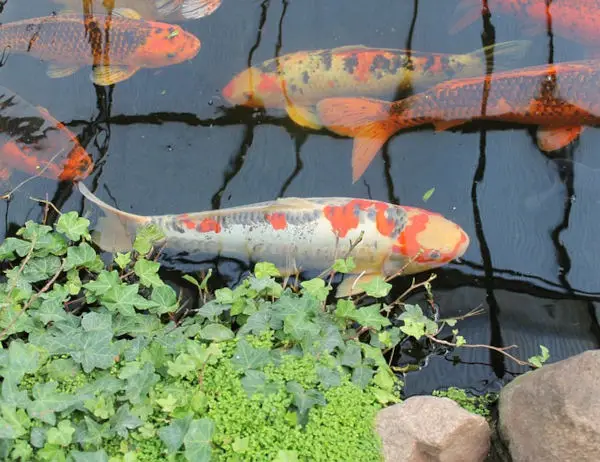
Caring for Koi as a Spiritual Practice
Feeding koi isn’t just a chore—it’s a quiet ritual that invites presence and connection. In Chinese culture, this daily act reflects not only care for the fish but also the cultivation of harmony within oneself.
As koi gather near the surface, many koi keepers practice mindfulness—watching their graceful movements, observing each fish’s appetite and energy. These moments of stillness can be grounding and meditative, offering a peaceful pause in a busy day.
Feeding at the same time each day also builds a rhythm, reinforcing stability in both the pond and the household. This steady interaction strengthens the bond between human and animal, and is believed to foster gentle, nurturing qi throughout the home.
Seasonal Pond Maintenance to Balance Yin-Yang
Just as nature shifts with the seasons, your koi pond must be adjusted to maintain balance—especially between yin and yang energies.
In summer, yang energy dominates. The water is warmer, activity is high, and koi are most active. This is the time to check oxygen levels, add shade elements (like water lilies), and ensure strong circulation to prevent overheating.
Autumn brings cooling yin energy. Reduce feeding, begin cleaning organic debris, and prepare koi for winter rest. In colder regions, a pond heater or de-icer may be needed to maintain open water and oxygen exchange.
Winter is deeply yin—quiet, still, and reflective. Avoid disturbing the fish. They enter a slower metabolic state and prefer low interaction.
Spring brings renewed yang energy. Carefully clean the pond, test water quality, and gradually reintroduce feeding. Balancing these seasonal needs helps sustain not just the koi, but the spiritual energy of the space itself.
| Season | Key Tasks | Yin-Yang Focus | Typical Water Temperature Range |
| Spring | Clean pond thoroughly, test water quality, gradually increase feeding | Rising Yang (growth, renewal) | 50°F–68°F (10°C–20°C) |
| Summer | Add shade (e.g., lilies), maintain oxygenation, monitor algae growth | Peak Yang (activity, heat) | 68°F–85°F (20°C–29°C) |
| Autumn | Reduce feeding, remove debris, prepare for winter rest | Transition Yin (cooling, slowing) | 50°F–68°F (10°C–20°C) |
| Winter | Minimize disturbance, prevent freezing with de-icer if needed | Deep Yin (rest, stillness) | 32°F–50°F (0°C–10°C) |
Related reading: How to Use Yin and Yang Philosophy for a Balanced and Harmonious Life – Opens in new tab
Health of the Fish, Health of the Home
Koi are more than decorative—they are living energy indicators. When your fish are healthy, active, and brightly colored, they reflect a space that is energetically well-balanced and emotionally vibrant.
But if your koi become sluggish, discolored, or ill, it may point to deeper imbalances—poor water quality, environmental stress, or even emotional turbulence in the home. In feng shui, sick or dying fish are a clear sign that energy has turned stagnant or negative.
Responding quickly with care—testing water, adjusting placement, or consulting an expert—not only saves the fish but restores harmony.
Many koi keepers describe this relationship as spiritual. The act of caring for these fish becomes a metaphor for nurturing the self: tending to emotional clarity, restoring peace, and honoring life’s delicate rhythms.
In this way, a koi pond becomes more than a feng shui cure. It transforms into a daily path of reflection, responsibility, and quiet joy.
Common Missteps and How to Avoid Them
One of the most common mistakes in koi pond care and feng shui is overcrowding the pond with too many fish. While koi symbolize abundance, too many fish in a confined space can lead to stagnant energy and poor water quality. Overcrowding stresses the fish, reduces oxygen levels, and disrupts the natural flow of chi.
To maintain vibrant energy, it’s important to balance the number of koi with the pond’s size—generally, one koi per 250 gallons of water is recommended. Proper filtration and regular water changes help prevent stagnation, keeping both the fish and the energy healthy.
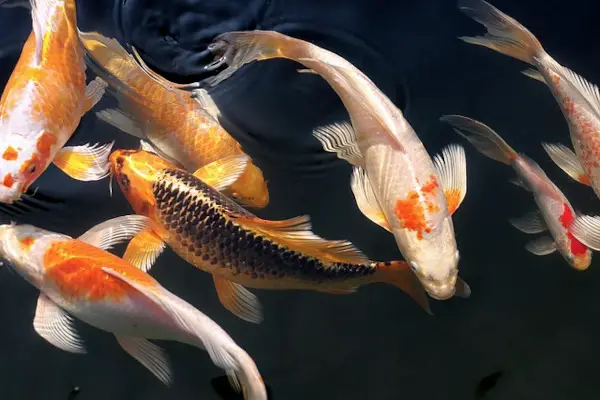
Clashing Colours with Interior Elements
Koi colors carry powerful symbolic meanings, but when used indoors—whether in aquariums, paintings, or décor—it’s essential to consider how these colors interact with your existing interior elements. Clashing or conflicting colors can create disharmony and disrupt the flow of positive energy.
For example, placing a bright red koi aquarium in a room dominated by cool blues might create visual tension and imbalance. To avoid this, align koi colors with the room’s feng shui elements and color scheme. This thoughtful integration ensures the koi’s symbolism enhances rather than conflicts with your space’s energy.
Ignoring Local Climate in Pond Design
Designing a koi pond without considering the local climate is a frequent oversight that can negatively impact both the fish and the feng shui benefits. In colder regions, ponds must be deep enough to prevent freezing solid in winter, while in hot climates, adequate shading and aeration are crucial to avoid overheating and oxygen depletion.
Ignoring these factors can lead to poor fish health and stagnant energy, undermining the pond’s role as a prosperity enhancer. Consulting local experts and adapting pond design to seasonal changes ensures a thriving environment that supports continuous positive chi flow.
| Problem | Feng Shui Consequence | Quick Fix |
| Overcrowding | Stagnant energy, stressed koi, blocked prosperity | Limit fish density; maintain 250–500 gallons per koi |
| Clashing koi colors | Imbalanced elemental energy, disharmony | Choose koi colors that complement your space’s dominant elements |
| Ignoring local climate | Fish health issues, disrupted energy flow | Adjust pond depth, add shade or heaters according to climate |
| Poor water quality | Negative qi, sick fish, stagnant energy | Install quality filtration; test water regularly |
| Improper pond placement | Exposure to Sha Qi (poison arrows), disrupted qi | Relocate or shield pond from harsh winds and sharp corners |
| Lack of maintenance | Energy stagnation, fish illness | Regular cleaning, seasonal care, and mindful feeding |
End Words
Koi fish hold a special place in Chinese culture and feng shui, symbolizing perseverance, prosperity, and peace. From their legendary journey over the Dragon Gate to their vibrant presence in art and daily rituals, koi inspire us to embrace resilience and ambition. Their colors carry unique meanings that can be thoughtfully incorporated into homes and gardens to attract specific energies—whether love, wealth, or tranquility.
In feng shui, koi ponds and aquariums are powerful tools for activating positive chi, but their design and care require mindful attention to elements such as water quality, placement, and balance. Whether through live fish, artwork, or even digital representations, the koi’s dynamic energy can enhance any space, inviting abundance and harmony.
By respecting the traditions and practicalities surrounding koi, and by choosing ethical and sustainable practices, you can unlock the full potential of these magnificent creatures. Embracing koi symbolism not only beautifies your environment but also nurtures a deeper connection to the flow of life and fortune.
Related reading: The Deep Meaning of Goldfish in Chinese Culture and Feng Shui – Opens in new tab
Stay in Touch
 Join our newsletter by using the forms on this website or click here!
Join our newsletter by using the forms on this website or click here! Follow us on Google News
Follow us on Google News Follow us on Facebook
Follow us on Facebook
Featured image by René Schaubhut from Pixabay

